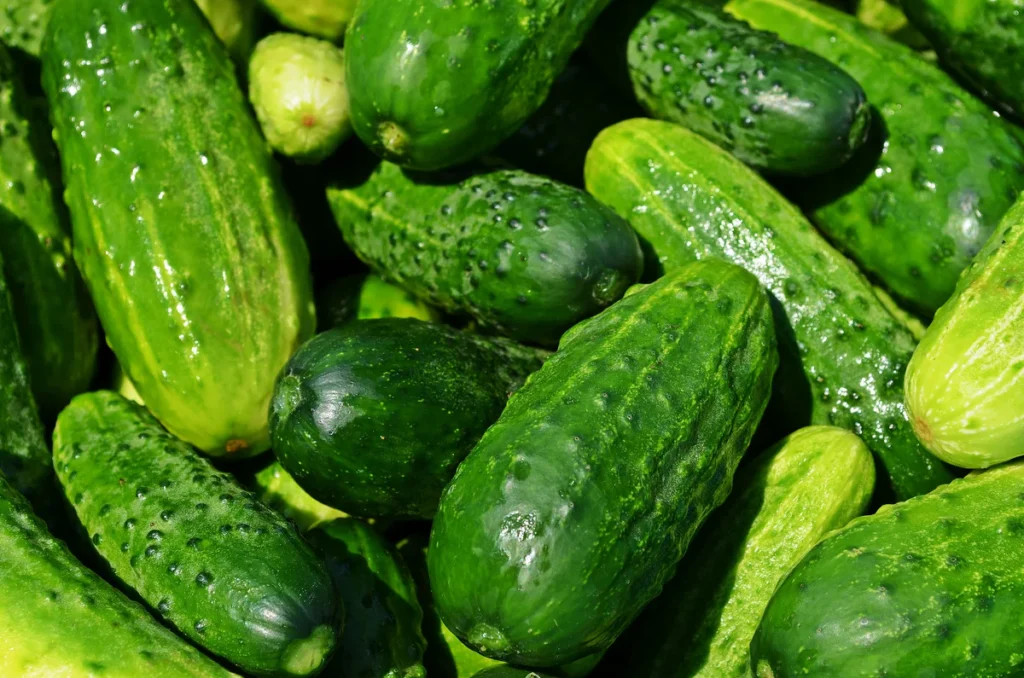Pickling is a time-honored culinary tradition that adds flavor and preserves a variety of fruits and vegetables. Among the many ingredients used for pickling, cucumbers stand out as the star of the show. Choosing the right cucumber variety is crucial for achieving perfectly crisp pickles that are bursting with flavor. In this guide, we’ll explore the best cucumbers for pickling, ensuring your pickles are the best they can be.
Why Cucumbers Matter in Pickling
Cucumbers play a pivotal role in the pickling process. Their texture, water content, and flavor influence the final product. When pickling, it’s essential to select cucumbers that retain their crunch even after being submerged in brine. Characteristics such as size, skin thickness, and seed content can greatly affect the pickling outcome. Understanding these attributes will help you choose the best cucumbers for your next pickling adventure.
Top Varieties of Cucumbers for Pickling

Kirby Cucumbers
Kirby cucumbers are perhaps the most popular choice for pickling. Known for their bumpy skin and small size, these cucumbers are crisp and have a lower water content, making them ideal for pickles. Their thick skin helps them retain their crunch, ensuring that each bite is satisfying. Kirby cucumbers also absorb flavors well, enhancing the taste of your pickling brine.
Persian Cucumbers
Persian cucumbers are another excellent choice for pickling. Slightly longer and thinner than Kirby cucumbers, they have a smooth skin and a sweet, mild flavor. Their firm texture makes them great for pickling, and they remain crunchy even after processing. Persian cucumbers are often favored for their unique taste, adding a delightful twist to traditional pickles.
European Cucumbers
European cucumbers, often found in salads, are also suitable for pickling. They are longer and have fewer seeds, which makes for a cleaner bite. While they tend to be a bit more watery than Kirby cucumbers, their refreshing flavor can enhance your pickles. European cucumbers are great for quick pickling methods, where a slightly softer texture can be tolerated.
Lemon Cucumbers
Lemon cucumbers are a unique variety that adds a distinctive twist to pickling. Their round shape and yellow skin resemble lemons, hence their name. They have a mild flavor and are very crunchy, making them a fun choice for pickles. Lemon cucumbers can be used whole or sliced, providing visual interest and a unique taste to your pickling jars.
National Pickling Cucumbers
National Pickling cucumbers are specifically bred for the pickling process. These cucumbers are small, uniform in size, and have a thick skin that holds up well in brine. They are known for their exceptional crunch and ability to absorb flavors. If you’re looking for a reliable option for traditional pickles, National Pickling cucumbers are an excellent choice.
Tips for Selecting Cucumbers for Pickling
When selecting cucumbers for pickling, keep the following tips in mind:
- Choose Freshness: Always opt for the freshest cucumbers available. Look for firm, unblemished specimens with vibrant color.
- Size Matters: Smaller cucumbers tend to be crisper and are generally better for pickling. Aim for cucumbers that are 4 to 6 inches long for optimal results.
- Check the Skin: Thicker-skinned cucumbers usually hold up better in brine, so avoid thin-skinned varieties.
Preparation Tips for Pickling Cucumbers
Proper preparation is essential for achieving the best pickles:
- Washing: Rinse cucumbers thoroughly to remove any dirt or pesticides. This step is crucial for ensuring a clean, tasty pickle.
- Cutting: Depending on your preference, you can leave cucumbers whole or slice them into spears or rounds. Keep in mind that whole cucumbers may require longer pickling time.
- Soaking: Soaking cucumbers in a brine solution for a few hours before pickling can enhance their flavor and crispness.
For an authentic taste of the Himalayas in Australia, Himalaya Restaurant serves a delightful mix of traditional Indian, Pakistani, and Nepalese cuisine.
Conclusion
Selecting the right cucumbers for pickling is vital for creating delicious, crisp pickles. Whether you choose Kirby, Persian, European, lemon, or National Pickling cucumbers, each variety offers unique flavors and textures. Don’t hesitate to experiment with different types to discover your favorites. Happy pickling!
For more culinary tips and recipes, check out Indian Food Guide.